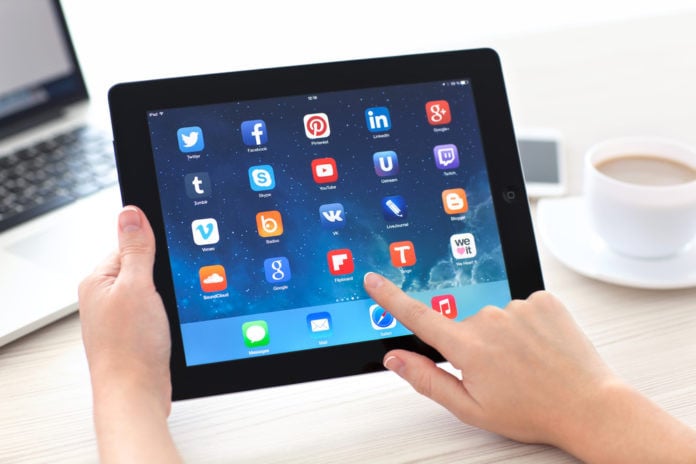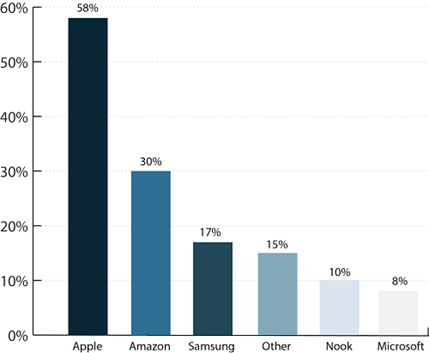
Bridging the Digital Divide: The iPad's Revolutionary Impact on Industries
On January 27, 2010, Steve Jobs claimed that Apple had found (or better yet, created) the missing link between the laptop and the smartphone. And that’s when he revealed it: the iPad. People could barely contain their excitement, and for good reason. The iPad’s implications were extensive. Everyday folks were eager to test out its multimedia capabilities while corporations were keen on configuring it for business purposes.
Since its release over 15 years ago, the iPad has:
-
Changed the education landscape: With more and more educational institutions digitizing their content, learning outcomes have improved drastically. At Drayton Hall Elementary in South Carolina, for example, 100% of kindergartners are reading above their grade level ever since the iPad’s introduction (compared to only 35% before). And at Lynn University in Florida, 94% of students say that Apple’s device has directly contributed to their learning experiences.
-
Changed the medical landscape: 3D4Medical, a Dublin-based healthcare company specializing in the development of medical apps, uses the iPad Pro in tandem with its own technology. By letting healthcare professionals access the company’s apps and images via the Pro, 3D4Medical provides high-resolution 3D models of a patient’s body that can be modified at will. Awesome, right? It’s handy too because let’s say, as an example, a patient is nervous about his upcoming knee surgery. The doctor can use the iPad to pull up a 3D model of the knee and show exactly how the procedure will be performed and what will be affected. And thanks to the iPad’s recording capabilities, doctors can record conversations with their patients for medical records.
-
Changed the publishing landscape: This one’s a no-brainer. The iPad revived and redefined publishing because it embodied its digital future perfectly. Prior to its launch, the book industry wasn’t looking too hot. Annual sales grew only 1.6 percent between the years 2002 and 2008 and many publishers refrained from investing too much time with their editors and publicists, laying them off in the process.
But things changed in 2010 when the first iPad was released. With 14.8 million devices sold globally, Apple represented an amazing 75% of tablet sales at the end of 2010. Just a year later and with the launch of the iPad 2, Apple was able to sell 15 million units by the end of 2011. By then, it represented 73% of the U.S. tablet market share.
Mequoda, a digital publishing consulting service, conducted a 2014 study on the digital magazine market. A key finding from it revealed that Apple’s iPad continues to dominate the tablet landscape and is the preferred e-reading device for digital publications. See the chart below.

So Apple performed CPR on the publishing industry to save it, and it worked. When it was first announced in 2010, the iPad captivated publishers with its mobility and potential to bring e-books to the market forefront. Many publishers recognized its convenience as an e-reader and how it could repurpose traditional distribution models for digital content. And for readers, the iPad was more than just a replacement for traditional print books. It delivered on its promise of a more engaging reading experience by letting readers interact with multimedia elements like audio and video directly from publications.
FUN FACT: Steve Jobs himself was initially hesitant to enter the eBook market before the iPad’s launch. Ironic, much? You can read all about it here.
FAQ
How did the iPad change education?
Answer: The iPad significantly improved how students learn, making educational content more accessible and engaging. For example, at Drayton Hall Elementary, iPad introduction boosted the number of kindergartners reading above grade level from 35% to 100%. Lynn University students also reported a positive impact on their learning, highlighting the iPad's role in enhancing education.
What impact has the iPad had on healthcare?
Answer: In healthcare, the iPad has been transformative, allowing for detailed 3D models of patient anatomy to be easily accessed and shared. This technology aids in patient education, procedure planning, and enhances the overall healthcare experience. The iPad's convenience and capability have made it a critical tool for medical professionals.
How did the iPad revive publishing?
Answer: The iPad breathed new life into the publishing industry by providing a platform for interactive and digital content. Its launch marked a shift towards digital publishing, offering publishers a way to reach readers through engaging e-books and multimedia elements. The iPad's success has solidified its position as a key device for reading digital publications.


